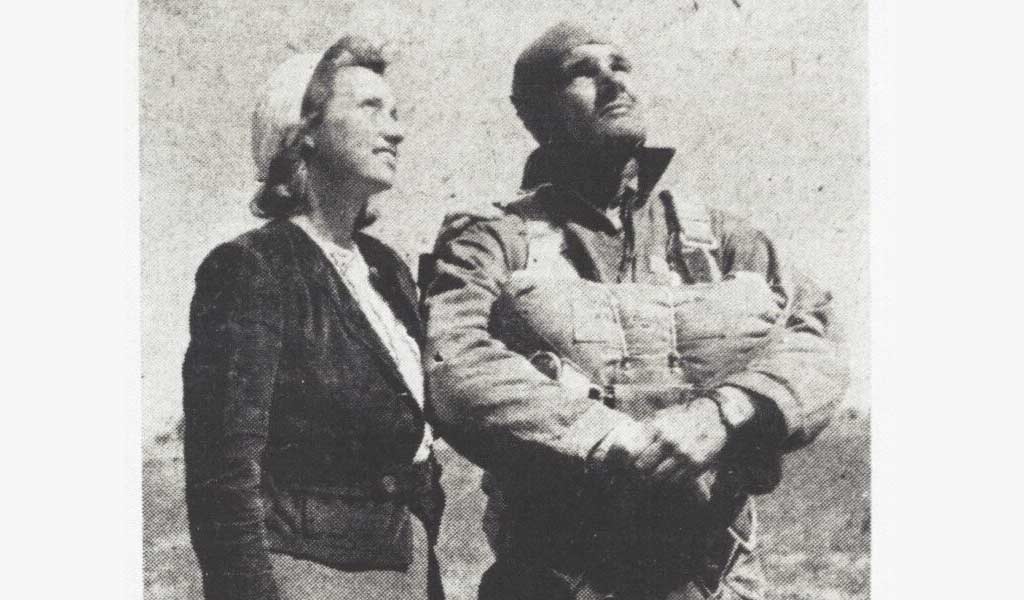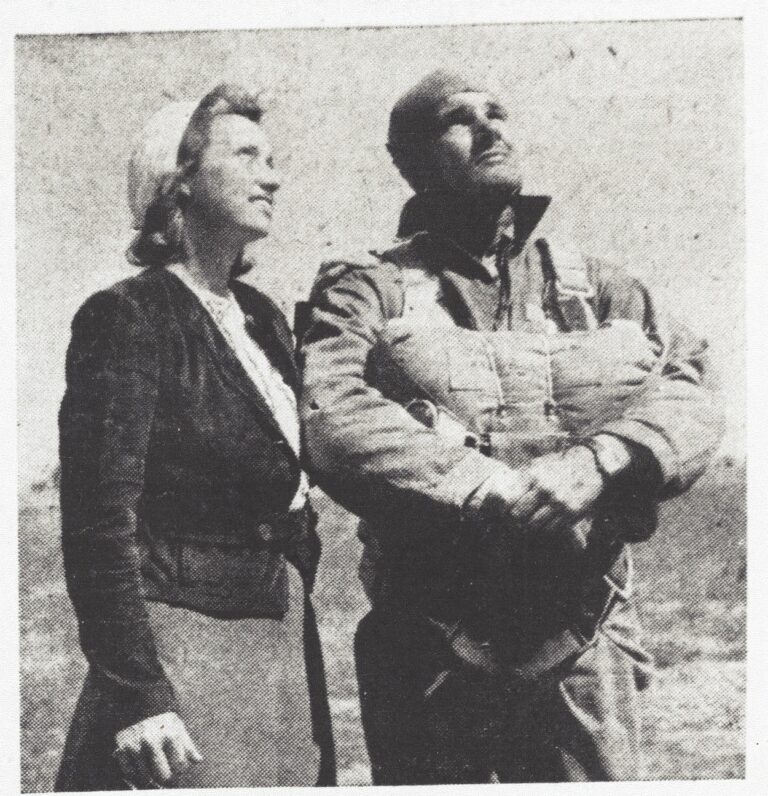Huerth Street

LtCol L. J. Kimball, USMC (Ret)
9 Jan 2022
In August of 1942, the citizens of Onslow County were cheered by the news that the 1st Marine Division (MarDiv), which had occupied the adjoining Marine Corps base of Marine Barracks (MarBks) New River (now Camp Lejeune), since beginning with the advance party’s arrival in September 1941, and subsequently departed beginning in May 1942 to locales unknown, had successfully conducted the nation’s first offensive of the war on the distant and previously unheard-of island of Guadalcanal. They were in turn saddened by the revelation that in the grim reality of war, the campaign had produced Jacksonville’s, and the county’s first casualty, Marine Captain Richard J. Huerth, a well-liked and respected neighbor in a town then of little over two thousand inhabitants. Like other married Marines that had encountered the shortage of available quarters aboard the base, he had elected to move into one of the several new housing developments in town, Onslow Terrace, and there on Johnson St.
Capt. Huerth was a Boston native and a 1936 graduate of the prestigious Ivy league Dartmouth College in New Hanover, NH, where he enlisted in the Marine Corps Reserve (USMCR) on 6 January 1935 and was appointed a private first class. Commissioned as a second lieutenant on 25 June 1937 after completing the Platoon Leaders Program, he was assigned to the 1st Marine Brigade in Quantico upon completion of the Reserve Officers Course and posted to the 5th Marines in November of 1939 as a company officer, most notably participating in Fleet Landing Exercise 6 at Culebra, PR, in January 1940. During further service with the 5th Marines and MarBks Quantico, he was promoted to first lieutenant on 8 April 1940 and met his future wife, Jeanne Gannon, a South Carolina native who was a base school teacher.
Following the initiation of the Corps’ parachute program in October of 1940, Huerth was accepted into this elite fraternity and joined the third class of Marines for training at the Lakehurst, NJ, facility, qualifying as a parachutist on 13 April 1941. The newly formed “Paramarines” trained extensively and rigorously during this developmental period, evolving a doctrine, and demonstrating their capabilities, as evidenced during the large-scale landing exercises of the Amphibious Force, Atlantic Fleet, involving the 1st MarDiv and the Army’s 1st Infantry Division at New River during August 1941. As the program expanded and new units were formed, Huerth found himself in January 1942 in the 1st Parachute Battalion (ParaBn) at New River as the commanding officer of Company B. Then, now as a captain, he took command of Company C, the last of the companies to be formed in the battalion, when it was activated during March 1942.
With the war’s progression, an immediate high-priority mission for the uniquely qualified, pioneering 1st MarDiv became manifest, to conduct a short-notice amphibious operation in the Guadalcanal (Solomons Islands) area to interdict the relentless Japanese advance into the southwest Pacific where they threatened the vital lines of communication to Australia and to New Guinea and Australia itself. Although yet incompletely trained and lacking a desired state of readiness, expediency and necessity left no alternative but the Carolina-based 1st MarDiv, which left New River in two echelons. The first, including the 1st ParaBn, bid farewell to their wives and entrained 7 June 1942 for Norfolk, embarking on 10 June to set sail via the Panama Canal for New Zealand, where a hurried attempt would be made to combat load the division’s gear onto attack transports.
The plan of attack entailed a main landing on Guadalcanal and secondary landings at Tulagi and the two islets of Gavutu-Tanambogo, north of Guadalcanal, on D-Day, 7 August 1942. This would be the first Allied offensive of the war and the first employment of American paratroopers, although conventionally and not by parachute. The 1st ParaBn, considered along with the 1st Raider Bn to be the most thoroughly trained and aggressive unit in the division, was tasked with assaulting the problematic islets of Gavutu-Tanambogo, Gavutu first. Measuring only 500 by 300 yards and covering some twenty-one acres, Gavutu was dominated by 148-foot hill and connected to the slightly smaller Tanambogo by a 300-yard causeway. Tanambogo was in turn dominated by a 121-foot hill and both were honey-combed with fortified caves and dugouts that offered protection to the heavily armed defenders from the preliminary bombardment and clear fields of fire to the landing beaches. And, in violation of the accepted rule-of-thumb that the attackers were to outnumber the defenders by a ratio of three to one, and an early indicator of the paucity of intelligence on the targeted islands in general, the Japanese defenders outnumbered the attacking Marine.
Aboard their attack transport, the 1st ParaBn, numbering only 351 Marines and the majority armed with the Reising .45 caliber sub-machine gun, was divided by company into three waves of landing craft, Co A into the first wave, Co B into the second, and Capt. Huerth’s Co C, with only seventy-seven effectives and the battalion headquarters, into the third. Descending cargo nets into the waiting snub-nosed landing craft (no ramped boats being available) in the transport area, they had a seven-mile nausea-inducing run to the line-of-departure for an H-Hour of 1200 at their designated beach, each four-boat wave separated by five-minute intervals.
As with the initial landings on Guadalcanal and Tulagi, and as with Co A, the first waves were unopposed. But Cos B and C were to endure the first opposed landings by Marines in the war, a withering fire from the dominating high ground on and around Hill 148 as well as flanking fire from Tanambogo that enveloped the boats as they approached the beach. One in ten Marines became immediate casualties. The older landing craft, without a ramp, required the embarked Marines to clamber over the sides into the water. Capt. Huerth, as soon as his boat beached, stood without hesitation at the gunwale and ordered his Marines to “clear the boat.” He was immediately shot twice and fell back mortally wounded. The H-Hour at Tulagi was 0800 and 0910 at Guadalcanal. The Marines initially achieved complete strategic and tactical surprise but the defenders at Gavutu had four hours to prepare for the Marines.

Tulagi and Gavutu-Tanambogo would fall within a matter of days but the eventual, iconic Guadalcanal campaign would endure under appalling conditions until February 1943. The 1st MarDiv would never return to New River, going instead following the war to Camp Pendleton on the west coast during July 1946 being supplanted at the base now called Camp Lejeune by the new Carolina Marine division, the 2nd MarDiv, the same month. Nor would the 1st ParaBn; all the parachute battalions being officially disbanded by February 1944. Nor would Capt. Huerth ever return to his wife and the bungalow on Johnson St. in Onslow Terrace that they had purchased on 7 December 1941. He was temporarily interred in the military cemetery on Tulagi before given his final repose in the Arlington National Cemetery on 12 March 1948.
But, the citizens of Jacksonville were determined that this well liked and respected officer was not to be easily forgotten. As reported in the minutes of the 19 January 1943 meeting of the Board of Town Commissioners: “Whereas, numerous residents and citizens of Jacksonville having requested to change the name of Johnson St…to Huerth St…in memory and of honor of Captain Huerth…Be it resolved that…the name be changed…” This was not a difficult decision. Jacksonville’s first bypass, then under construction to connect US 17 and State Hwy 24 north and east of the town to the new bridge over the New River (subsequently named the Buddy Phillips bridge), and likewise under construction, was to be named Johnson Blvd. As was the Johnson St in Onslow Terrace where the Huerth house was located, both were named in honor of Dr. Graham P. Johnson, the founder of the Johnson Drug Company. Dr. Johnson would still be honored. The resolution passed and was subsequently approved by the State House and Senate. Jeanne continued to live there until she moved to California and sold the house in 1945. Since 1943, Huerth St, which connects New Bridge St to Johnson Blvd in downtown Jacksonville, was the first and continues to stand as a testament to the respect and warm regards in which the citizens of Jacksonville hold their Marine neighbors, as was likewise overwhelmingly evidenced following the Beirut bombing in 1983. It likewise stands as a fitting memorial to a gallant officer who made the ultimate sacrifice for his country in a distant clime and place.
SELETED BIBLIOGRAPHY
“Belmont Officer Takes Parachute Jump Course, “Boston Globe, 18Jun41.
Frank, Richard B. Guadalcanal: The Definitive Account of the Landmark Battle. New York: Random House, 1990.
Hammel, Eric. Guadalcanal: Starvation Island. New York: Crown Publishers, 1987.
Hoffman, LtCol Jon T. USMCR. Silk Chutes and Hard Fighting: The USMC Parachute Units in WW II. Wash DC: Hist and Mus Div, HQMC, 1999.
Johnstone, Maj John H. USMC. USMC Parachute Units. Wash DC: Hist Br, G-3 Div, HQMC, 1961.
Kimball, L.J. “The Bridges of Onslow County,” unpublished manuscript, Onslow County Historical Society, 9sep98.
Lane, Kerry L. Guadalcanal Marine. University Press of Mississippi, 2004.
Minute Books of the Jacksonville Town Commissioners, 19Jan43 Minutes, Office of the City Clerk, Jacksonville, NC.
Muster Rolls of Officers and Enlisted Men of USMC, 1798-1958.
Records of Deeds, Onslow County Courthouse, Jacksonville, NC, Book 197/Page 6, 194/636, 193/519, 202/448.
Zimmerman, Maj John L. USMCR. The Guadalcanal Campaign. Wash DC: Hist Div, HQMC, 1949.
Posted on: March 1, 2022


